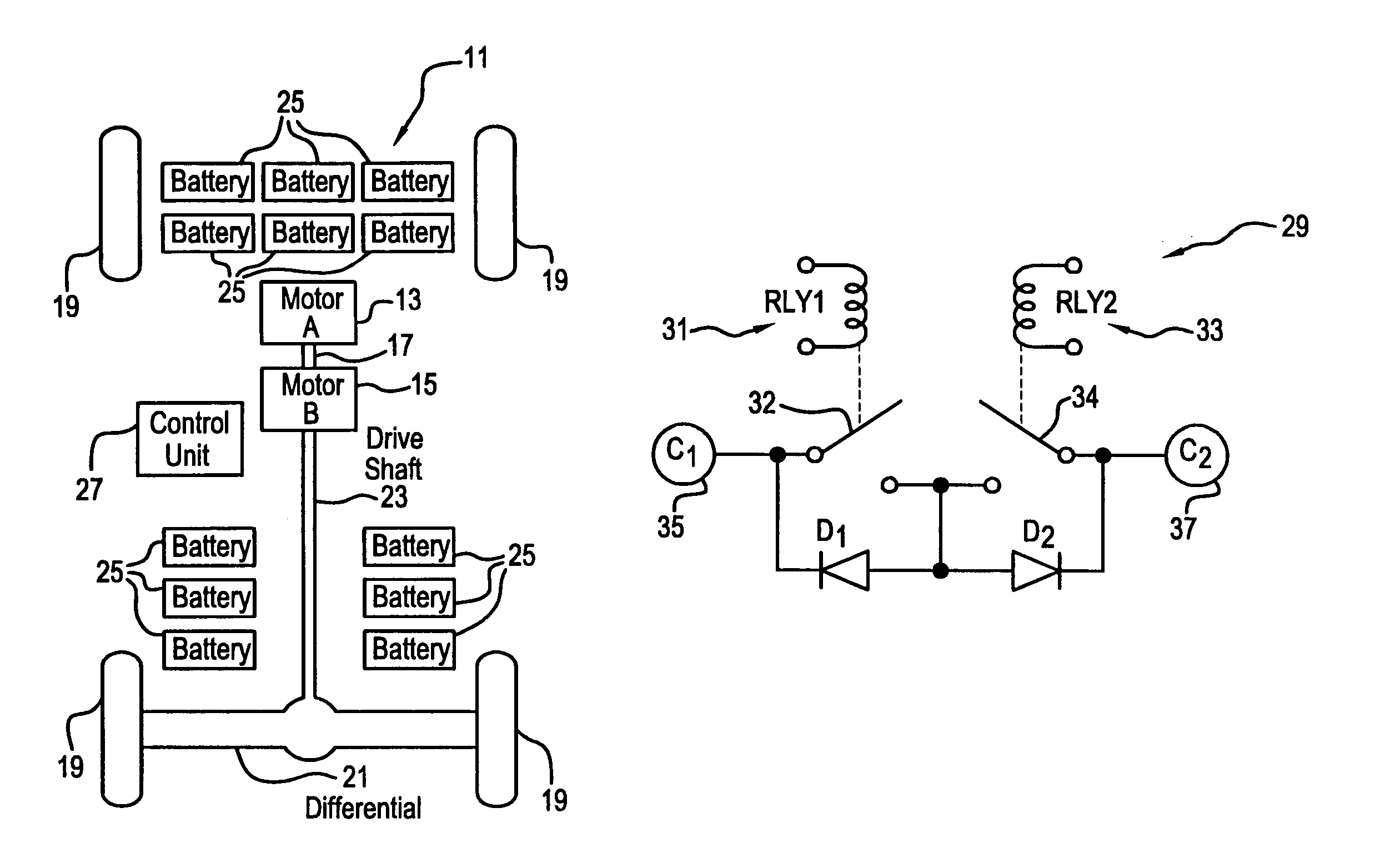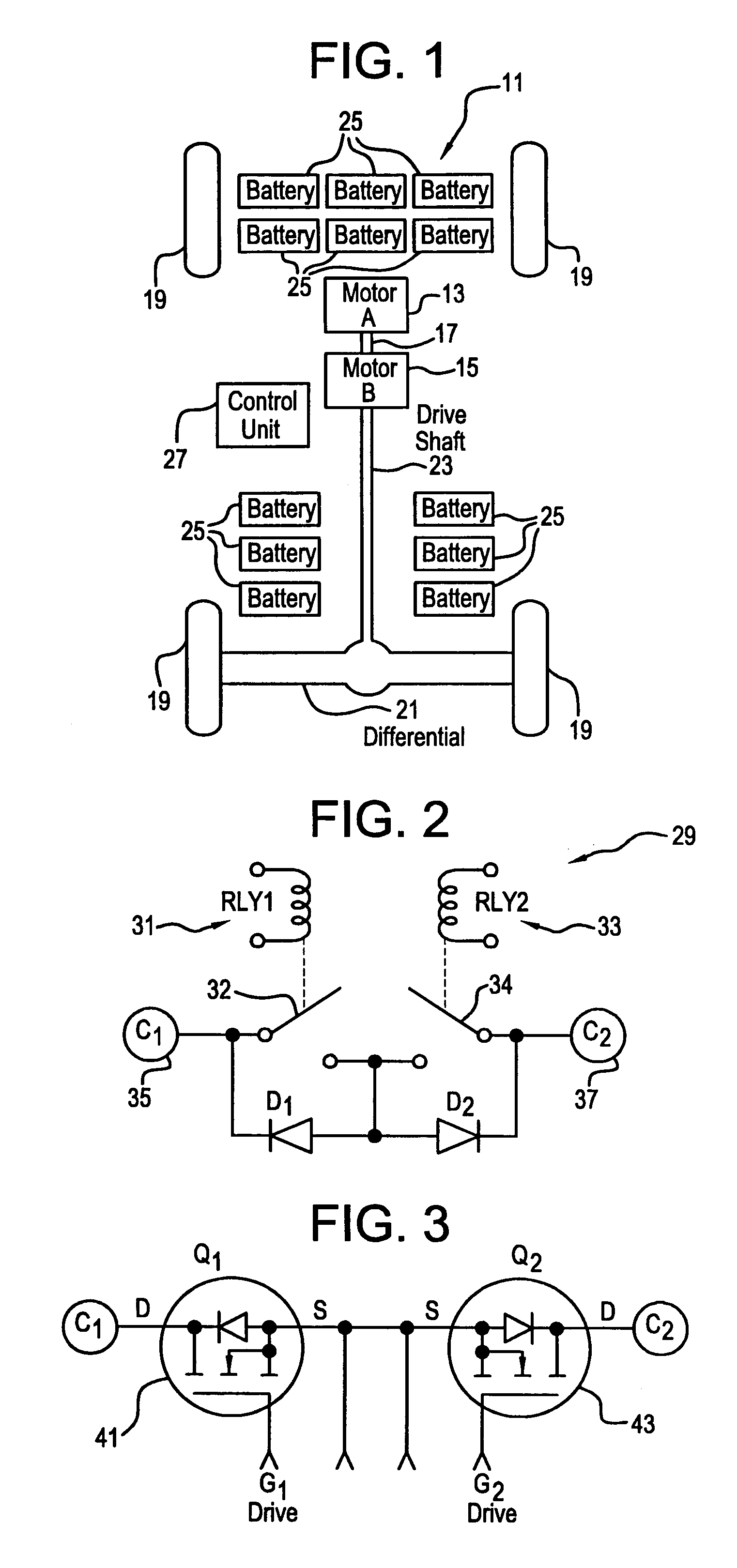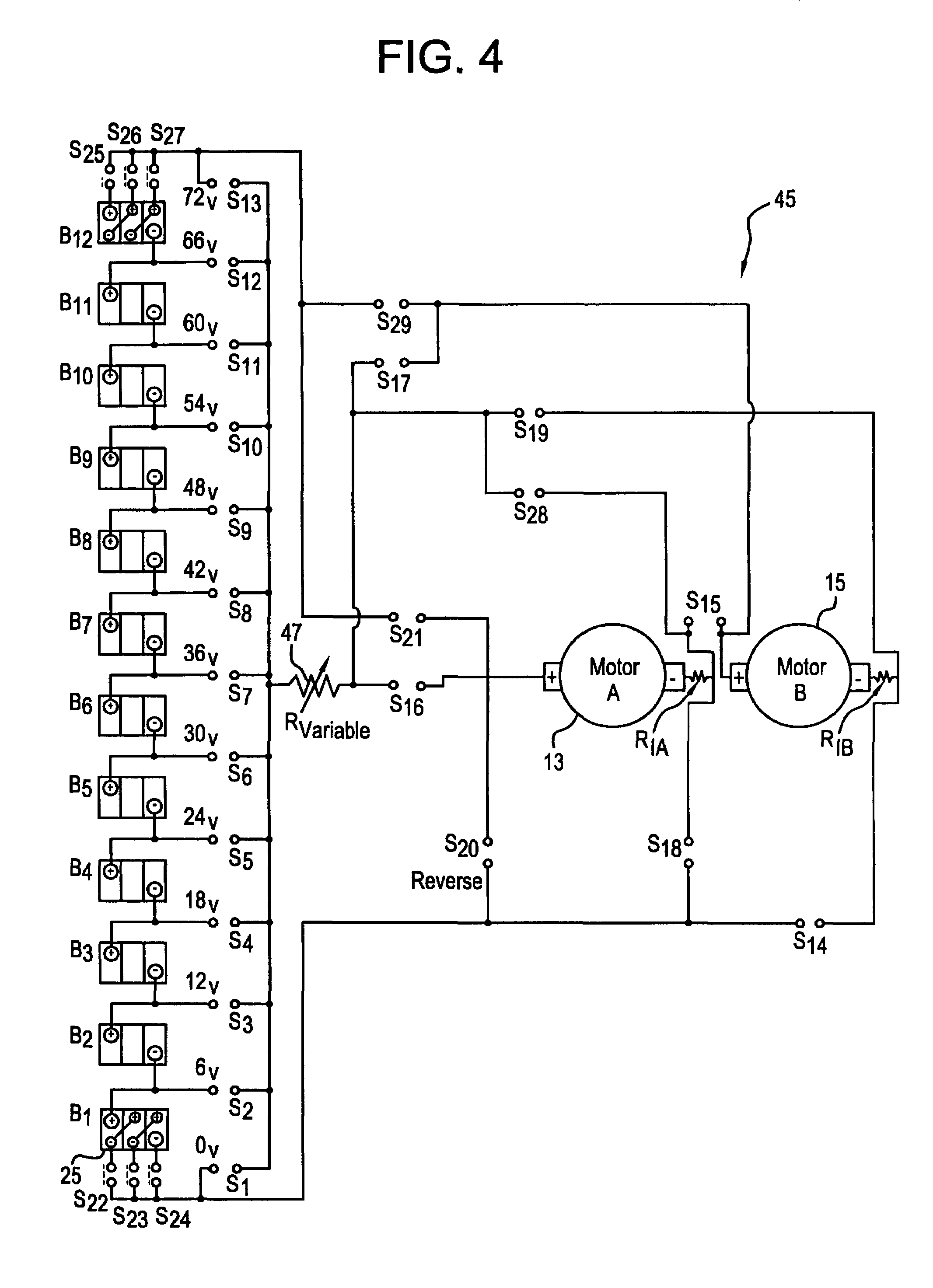Electric vehicle motor and control system with high efficiency regeneration
- Summary
- Abstract
- Description
- Claims
- Application Information
AI Technical Summary
Benefits of technology
Problems solved by technology
Method used
Image
Examples
Embodiment Construction
[0037]FIG. 1 is a schematic of a configuration of an automobile 11 with multiple motors 13, 15 that are mechanically coupled 17 together. Wheels 19 of the automobile 11 are connected by a differential 21 connected to the motors 13, 15 by a drive shaft 23. Multiple batteries 25 are located within the automobile 11. A control unit 27 controls the motors 13, 15.
[0038]FIG. 2 is a schematic representation of back-to-back rectifiers 29 with shunt switching. A mechanically or electromechanically switched system has relays 31, 33 and contactors 32, 34. The rectifiers directionally control current between switched points 35, 37 in the power line. Four switching modes are provided. The first is an open circuit when neither relay is energized and both contactors are open. The second is a short circuit when both relays are energized and both contactors are closed. The third is conduction through rectifier D2 passing current to the right, with relay 31 energized and contactor 32 closed. The four...
PUM
 Login to View More
Login to View More Abstract
Description
Claims
Application Information
 Login to View More
Login to View More - R&D
- Intellectual Property
- Life Sciences
- Materials
- Tech Scout
- Unparalleled Data Quality
- Higher Quality Content
- 60% Fewer Hallucinations
Browse by: Latest US Patents, China's latest patents, Technical Efficacy Thesaurus, Application Domain, Technology Topic, Popular Technical Reports.
© 2025 PatSnap. All rights reserved.Legal|Privacy policy|Modern Slavery Act Transparency Statement|Sitemap|About US| Contact US: help@patsnap.com



